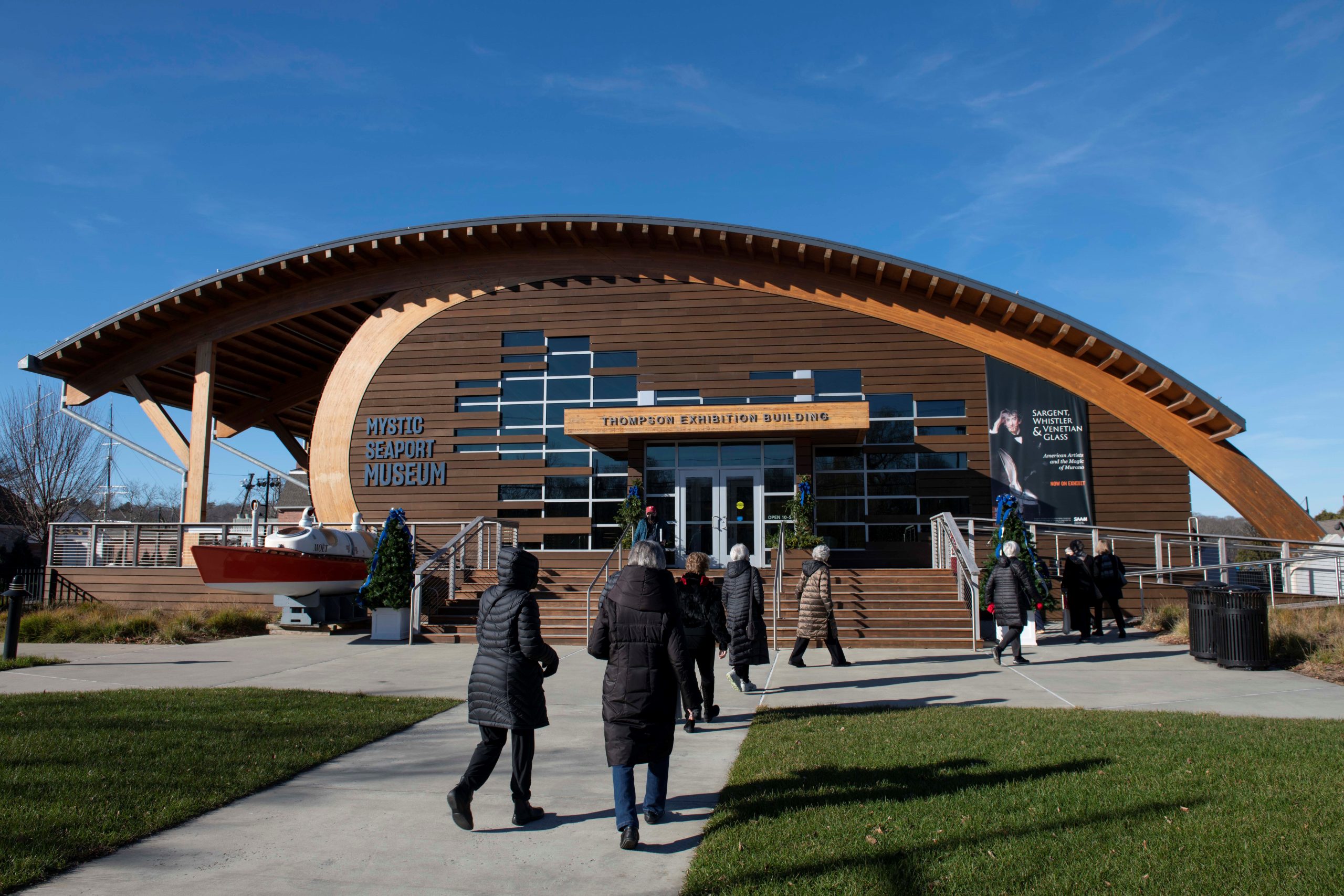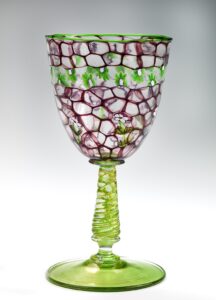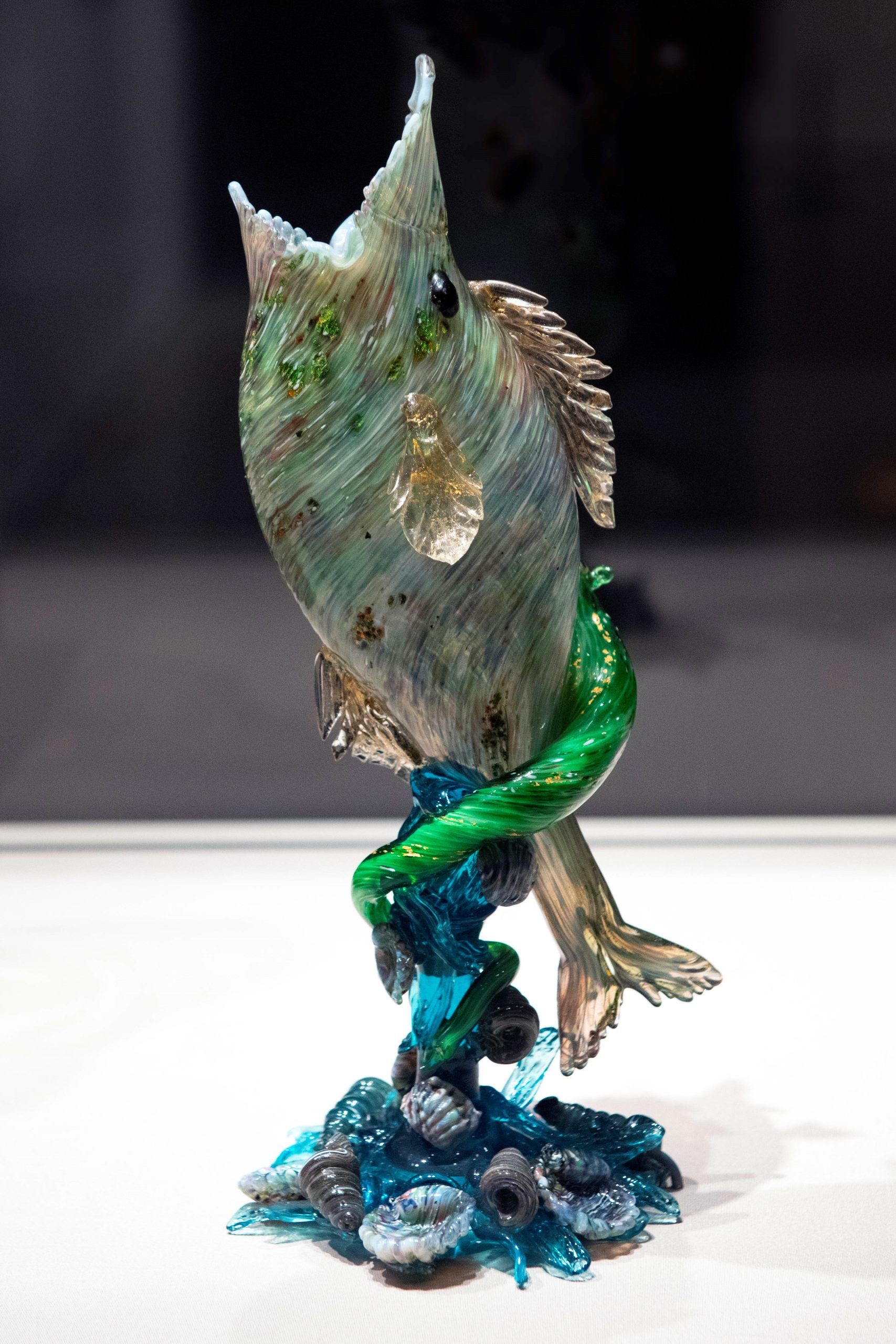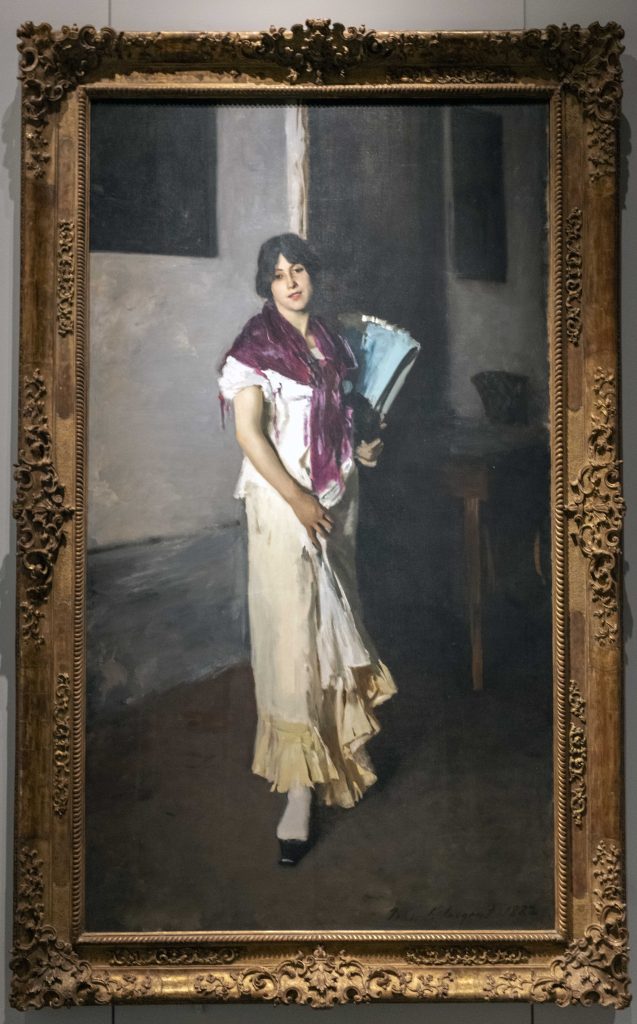
INSIDE THIS EDITION:
- SPOTLIGHT/THE MEMOIR: How Some Wholesome Midwestern Kids Found Themselves at One of the Most Renowned Anti-War Protests of the 1960s; Helped the Yippies; Learned some things; and Returned Home Safe by Bill Hudson
- SARGENT, WHISTLER, & VENETIAN GLASS EXHIBIT AT MYSTIC SEAPORT MUSEUM: Photo highlights from LLC's carpool trip on Dec 2
- ADVANCING COMMUNITY AND SOCIAL JUSTICE THROUGH ARTS AND CULTURE: Two Upcoming Events You Won't Want to Miss
- READING REMINDER: LLC's Diversity, Equity and Inclusion Bibliography
- STAGES OF FREEDOM/THEME OF THE MONTH: “Quote of the Day, Words of Wisdom from African American doers, thinkers, and creatives” – A new quote each day in January
Spotlight/The Memoir
How Some Wholesome Midwestern Kids Found Themselves at One of the Most Renowned Anti-War Protests of the 1960s; Helped the Yippies; Learned some things; and Returned Home Safe
by Bill Hudson
On a cool Friday afternoon, October 20, 1967, I stepped on a bus in Bloomington, Indiana to travel to Washington D.C. for what would be the largest demonstration against the Vietnam War up to that time.
I was not on that bus because of passionate opposition to the Vietnam War; it was more complicated. A year earlier when I arrived at Indiana University as a freshman, I considered myself a strong supporter of the war. Like many at the time, the Johnson administration’s rationale for the war had persuaded me that, if the United States did not hold the line in Vietnam, countries across Asia and beyond would fall to communism like a row of dominoes. American and allied South Vietnamese soldiers were fighting and dying to preserve the freedom of the South Vietnamese and hold the scourge of communism at bay.
During my first year at IU, this certainty about the virtue of war began to wane. As I learned more about the conflict in my courses, campus teach-ins, from my own reading, and as I engaged in long bull sessions and arguments in my dorm, I had come to have doubts about American involvement in Vietnam. In the fall of 1967, ambivalence best described my attitude: I was not yet ready to commit to all out opposition to the war and American withdrawal, but I was having grave doubts about the morality and wisdom of the war. Despite these doubts, I was far from ready to join a protest against it.
My best friend at the time, Paul, shared my ambivalence. I knew from our conversations that his views, like mine, had evolved in the previous months. My friendship with Paul had been forged, over the previous year, in the maelstrom of campus politics. We were prominent among the “moderate” faction of IU student politicians holding the line against campus radical control of student government, much like American forces were holding the line against communism in Vietnam. So, I was taken aback in mid-October when Paul told me that he was planning to travel to Washington D.C. for the planned anti-war protest on October 21st. I was only dimly aware that a protest was being planned – the campus Students for a Democratic Society (SDS) had been promoting the protest for a few weeks – but I had paid little attention and my friend, and I had never discussed it.
Paul quickly explained. His girlfriend, Debby, attended Tufts University in Boston. The National Mobilization Committee against the War – the MOBE – was sponsoring buses to bring students from universities across the country for the October protest. The bus rides were virtually free – the MOBE asked only a five-dollar donation to ride. Paul and Debby saw this as a cheap way to see one another in D.C. for the weekend. Debby’s best high school friend, Kathy – a student at DePauw University in nearby Greencastle, Indiana, would make her way to Bloomington to catch the bus with Paul to go see her friend. I later suspected that Kathy had concocted the whole scheme. Paul and Debby’s romance had blossomed over the summer in their hometown. The weeks and miles apart were exacting a toll on their passion, something about which Kathy was aware. Getting them together, however briefly in D.C. was a way to keep the flame alive. I would learn later that Kathy had friends among SDS members at DePauw who had told her about the protest and schooled her on the logistics for getting there. After explaining the plan, Paul proposed that I come along. “Come on Bill”, he urged, “this is an adventure, a cheap way to get to Washington and see the sites, plus you will get to meet Debby.” I do not remember him including protesting the war as a reason for going.
I mulled over the matter for several days – attracted by the adventure but worried about my parents’ reaction if they somehow managed to learn that I had gone to the Washington protest without informing them (something I certainly was not going to do). Also, what if something happened on the trip that would assure their finding out? Besides, I had a date lined up that Friday with a girl I had gone out with a few times. Did I want to cancel that to go to a Washington protest that I did not really care about? In the end, on Friday afternoon, just before the buses were to leave, I decided to go. I grabbed my toothbrush, asked my roommate to call the young woman with whom I had the date to cancel, and ran to board the bus.
We arrived in Washington early on Saturday morning under a cloudless sky. The cool, crisp, air of autumn made for perfect weather for an anti-war protest. The plan was to meet Debby and her friends from Tufts on the corner of Constitution and 14th Street, just across the street from the then new Smithsonian Museum of American History at around 11 AM. That gave us a few hours to wander around the Mall and the adjoining streets. At 10 AM, opening hour for the Smithsonian Museums, we slipped into the History Museum just like any ordinary tourists (in those days there were no metal detectors or other security), to visit the restroom, wash up, and use our toothbrushes. At the appointed hour as planned, we found Debby and friends across the street.
After introductions all around, we crossed Constitution Avenue, walked past the Washington Monument toward the Lincoln Memorial. When we got near the Memorial we encountered a huge crowd already gathered in front of the Memorial steps and spreading back along both sides of the Reflecting Pool. We edged our way into the crowd to listen to the speeches that had already begun. This, of course, was before the days of the Jumbotron, so we could only perceive the assembled speakers as tiny figures gathered far away on the Lincoln Memorial steps. We could hear what was said, however, from the many loudspeakers arrayed around the crowd. We heard anti-war speeches from pediatrician and now anti-war activist Dr. Benjamin Spock, from anti-war activist David Dellinger, from author Norman Mailer, and others. Peter, Paul, and Mary sang of the “Great Mandala” and Phil Ochs sang his repertoire of anti- war anthems. A favorite with the crowd was “The Draft Dodger Rag”:
“Sarge, I’m only eighteen, I got a ruptured spleen
And I always carry a purse
I’ve got eyes like a bat and my feet are flat
My asthma’s getting worse….”
Around mid-afternoon, Yippie leaders Abbie Hoffman and Jerry Rubin took the stage to exhort the crowd to march on the Pentagon – the main event of the day. The crowd began to slowly funnel onto the Memorial Bridge across the Potomac like icing squeezed from a pastry bag. After a long while, our little group reached the bridge and joined the march or rather, because of the press of the crowd, the shuffle across the river to the entrance to Arlington Cemetery on the other side. All around us people yelled out: “Stop the War”; “Bring the Boys Home”; and “Hey, hey LBJ – How many kids have you killed today”. When we reached the end of the bridge we flanked to the left and headed toward the Pentagon.
Somehow, as we walked along, we learned, perhaps from the MOBE marshals arrayed beside the route of march, that once we reached the Pentagon, we would have two options: Go to the front of the Pentagon where an attempt to storm the entrance was planned. Those who went that way were at high risk of being arrested; Or file to the side of the building as a part of the Yippie plan to levitate the Pentagon. The idea was to surround the whole building then direct psychic energy at the building to raise it off the ground. No real chance of arrest with the second option. Our little group opted to join with the Yippies and levitate. The last thing we wanted was for our parents, who had no idea that we were at the march, to receive a call that they needed to bail their child out of a DC jail. So, when we reached the North Pentagon parking lot, we turned right and joined a long line of levitators seated on the grass on the side of the building.
We settled in comfortably on the grass. The only discordant note was to see the machine gun emplacements on the roof of the Pentagon with barrels aimed at us. Despite this ominous vision, we happily joined into the mellow mood and chanted along with the others “Ooooooom - Ooooooom” as we directed our thoughts to lifting the Pentagon off its foundations. Pretty soon we noticed the aroma of marijuana wafting above us. No one in our little group had yet joined the drug scene, but the ever-resourceful Kathy pulled from the knit hippie bag slung over her shoulder a fifth of scotch that we shared around, achieving our own kind of mellow.
After a time, we heard a loud commotion from the front of the Pentagon. Soon a scent of tear gas mixed overhead with the odor of marijuana. Unseen by us, protestors at the Pentagon entrance faced a phalanx of military police with bayoneted rifles. The iconic image from this confrontation is the photograph of a young woman protestor placing a flower in the rifle barrel of a young soldier.
A swarm of protesters did rush the Pentagon entrance only to be rebuffed by the military police and several hundred US Marshalls who proceeded to tackle and arrest the demonstrators. Approximately six hundred protesters were arrested that evening, as had been predicted, and hauled off to DC jails. Among them was Norman Mailer who later would write his memoir/novel Armies of the Night chronicling the day’s events.
On our side of the Pentagon, all was peaceful. We continued to focus all our psychic energy on trying to raise the building, but it did not move. Inside the War Machine churned on in its deadly work.
As darkness spread over the scene, the crowd of levitators began to disperse. We made our way back to the long line of buses winding around the roads stretching back to the Arlington Cemetery entrance. We found the bus to Boston and said goodbye to Debby and the Tufts contingent. A little way down the road, Paul, Kathy, and I found the Bloomington bus, climbed aboard, and fell exhausted into our seats for the long ride home.
As the bus wound its way through the streets of DC heading toward the interstate highway and before I drifted off to sleep, I reflected on the events of the day and how my outlook on things had changed. My ambivalence about the war in Vietnam had vanished. After a day amid thousands of fellow Americans committed to ending an unjust and immoral war, I had come to agree. The war needed to end now. In the years to follow, I would participate in many more protests and marches against the Vietnam War until the grit, determination, and sacrifice of the Vietnamese themselves would end the war. I also had come to regard the campus radicals at Indiana University in the new light. I resolved to no longer oppose them when we got back to Bloomington. In fact, I wondered: Was I becoming a campus radical myself?
Sargent, Whistler, & Venetian Glass: American Artists and the Magic of Murano
On December 2, 2022, a group from LLC carpooled to Mystic, CT to experience the Sargent, Whistler, & Venetian Glass: American Artists and the Magic of Murano exhibit at the Mystic Seaport Museum.
Many thanks to Bob Kemp for the beautiful photographs.

Sargent, Whistler, and Venetian Glass: American Artists and the Magic of Murano, brings to life the Venetian glass revival of the late nineteenth century and the artistic experimentation the city inspired for visiting artists. It is the first comprehensive examination of American tourism, artmaking, and art collecting in Venice, revealing the glass furnaces and their new creative boom as a vibrant facet of the city’s allure.
Though the Venetian island of Murano has been a leading center of glass-making since the middle ages, today’s thriving industry stems from a burst in production between 1860 and 1915. In this era, Murano glassmakers began specializing in delicate and complex hand-blown vessels, dazzling the world with brilliant colors and virtuoso sculptural flourishes. This glass revival coincided with a surge in Venice’s popularity as a destination for tourists, leading to frequent depictions of Italian glassmakers and glass objects by artists from abroad. American painters and their patrons visited the glass furnaces, and many collected ornate goblets and vases decorated with flowers, dragons, and sea creatures. Venetian glass vessels, and also glass mosaics, quickly became more than souvenirs—these were esteemed as museum-quality works of fine art.

Moreover, the inventions of Murano’s master glassmakers established Venice as a center for artistic experimentation. Sojourns in Venice were turning points for John Singer Sargent, James McNeill Whistler, and scores of artists who followed in their footsteps, often referencing the glass industry in their works.
Featuring more than 140 objects, this exhibition presents a choice selection of glass vessels in conversation with paintings, watercolors, and prints by the many talented American artists who found inspiration in Venice. This juxtaposition reveals the impact of Italian glass on American art, literature, design theory, and science education, as well as ideas at the time about gender, labor, and class relations.

In addition to works by Sargent and Whistler, the exhibition features paintings and prints by Frank Duveneck, Thomas Moran, William Merritt Chase, Maurice Prendergast, Maxfield Parrish, Louise Cox, and Ellen Day Hale.
These are featured alongside rarely seen Venetian glass mosaic portraits and glass cups, vases, and urns by the leading glassmakers of Murano, including members of the legendary Seguso, Barovier, and Moretti families. Remarkable works from the Smithsonian American Art Museum’s collection join loans from the Metropolitan Museum of Art, the Art Institute of Chicago, and dozens of other distinguished public and private collections.
For Sargent, Whistler, and many of their patrons, Venetian glassware was irresistibly beautiful, and collecting these exquisite vessels expressed respect for both history and innovation. By recreating their transatlantic journey—from the furnaces of Murano to American parlors and museums—this exhibition and catalogue will bring to life the creative energy that beckoned nineteenth-century tourists and artists to Venice. This spirit spawned the renowned Venice Biennale contemporary art festival, and it lives on in Venetian glassmakers’ continued commitment to excellence.
The exhibition is organized by Crawford Alexander Mann III, former curator of prints and drawings at the Smithsonian American Art Museum, current Chief Curator at Telfair Museums in Savannah, Georgia.

The exhibit continues through February 27, 2023.
Advancing Community and Social Justice Through Arts and Culture:
Two Upcoming Events You Won't Want to Miss
On Thursday, January 12, from 4-5 pm, LLC's Diversity, Equity, and Inclusion Committee will present the second in a series of webinars about the City of Providence's social justice process known as Truth, Reconciliation and Reparations. Our guest speaker is Valerie Tutson, a member of the African American Ambassadors Group's Art and Culture Subcommittee and one of the founders of the RI Black Storytellers. Valerie will talk with us about the important role that the arts play in opening minds, bringing folks together and taking creative approaches to problem solving.
Click here to register.
2023 is a big year for the Rhode Island Black Storytellers (RIBS.) Not only is it the 25th anniversary of the group's founding, but it's also the 25th birthday of Funda Fest, an annual celebration of Black storytelling that spans two weeks in January. And RIBS is inviting everyone to join the celebration.
The Rhode Island Black Storytellers (RIBS) came together in 1998 to promote awareness and appreciation of Black storytelling and to teach and encourage people who want to become storytellers themselves. For hundreds of years, in Africa and amongst African descended communities around the world, the oral art of storytelling has been used to nurture a sense of community and to preserve African heritage by passing history and culture from one generation to the next. For 25 years, the RIBS has continued this tradition with public performances and visits to schools throughout Rhode Island.
The RIBS's important work extends beyond the Black community. In these days, as many Rhode Islanders are seeking to better understand the impacts of slavery and racism, storytelling provides a chance for everyone to experience Black culture presented by Black people. Stories bring alive a history that many of us haven't learned. In classrooms, they help teachers provide lessons for diverse student populations. Mental health professional Percy Lewis expressed the importance of this work when he wrote to thank storyteller Sumner McClain for appearing at the first annual Juneteenth event sponsored by the RI Department of Mental Health.
I just had to share the impact Sumner McClain had . . . [he]so eloquently made everyone, black, white and every color in between feel totally comfortable with hearing of the importance of Juneteenth and race in America today. He was truly amazing . . .

If you haven't had a chance to enjoy and learn from a RIBS performance, there's no better opportunity than Funda Fest 2023. The name comes from a Zulu word meaning "to learn," but as the RIBS like to say, it also looks like fun—and it will be. The RIBS has teamed with nine community partners and is pulling out all the stops for the event's 25th birthday celebration, which runs from January 14th through January 29th. Events will be held in person, but ticketholders can also elect to attend online or to view the performances later online. Highlights include:
- Storytelling Concert on Sunday, January 15 3-5 pm, at the Southside Cultural Center of RI, Providence. Presented by RIBS and RI Latino Arts
- Black History Live! on Saturday, January 21 at the Southside Cultural Center of RI, Providence. Three separate performances about Negro Leagues baseball star Cool Papa Bell, the slave ship Malaga, and Black opera diva Sissiereta Jones, who was born in Providence.
- Free Family Fun Day on Saturday, January 28, 10 AM-4 PM at the BLM RI African American Innovation Center, Pawtucket and the MPACT Stage Maple Street Performing Arts Center and Theatre, Pawtucket. Including Drumming and Dance Workshops; Art Reception; the Langston Hughes Community Poetry Reading; Youth Storytelling Performance; Family Storytelling Concert; Vendors Cultural Market Place
- Storytelling for Grown Folk on Saturday, January 28 at 7:30 PM at the MPACT Theatre, Pawtucket. Featuring invited national and international performers.
- Sacred Storytelling with W.A.R and Mixed Magic Theatre on Sunday, January 28, 2-4 PM at the MPACT Theatre, Pawtucket. Storytellers and dancers, featuring Exult Choir from Mixed Magic, W.A.R. Artists & Featured Guests
For more details and to learn how to purchase a Funda Fest pass or tickets for individual performances, go to the Funda Fest website https://fundafest.org.
READING REMINDER
LLC DIVERSITY, EQUITY, AND INCLUSION BIBLIOGRAPHY
To browse the DEI Bibliography, use the following link where you can also access the Submission Form for recommendations: lifelonglearningcollaborative.org/dei-bibliography/.
You can find the bibliography on the LLC website under Programs > Diversity, Equity and Inclusion > DEI Bibliography.
Please direct your questions to Joan Hausrath at [email protected].
From Stages of Freedom
The Stages of Freedom daily theme for the month of January is “Quote of the Day, Words of Wisdom from African American doers, thinkers, and creatives.”
January 2, 2023:
“When you get, give. When you learn, teach.” – Dr. Maya Angelou
To learn more about Stages of Freedom, contact [email protected] or visit their website at www.stagesoffreedom.org.
